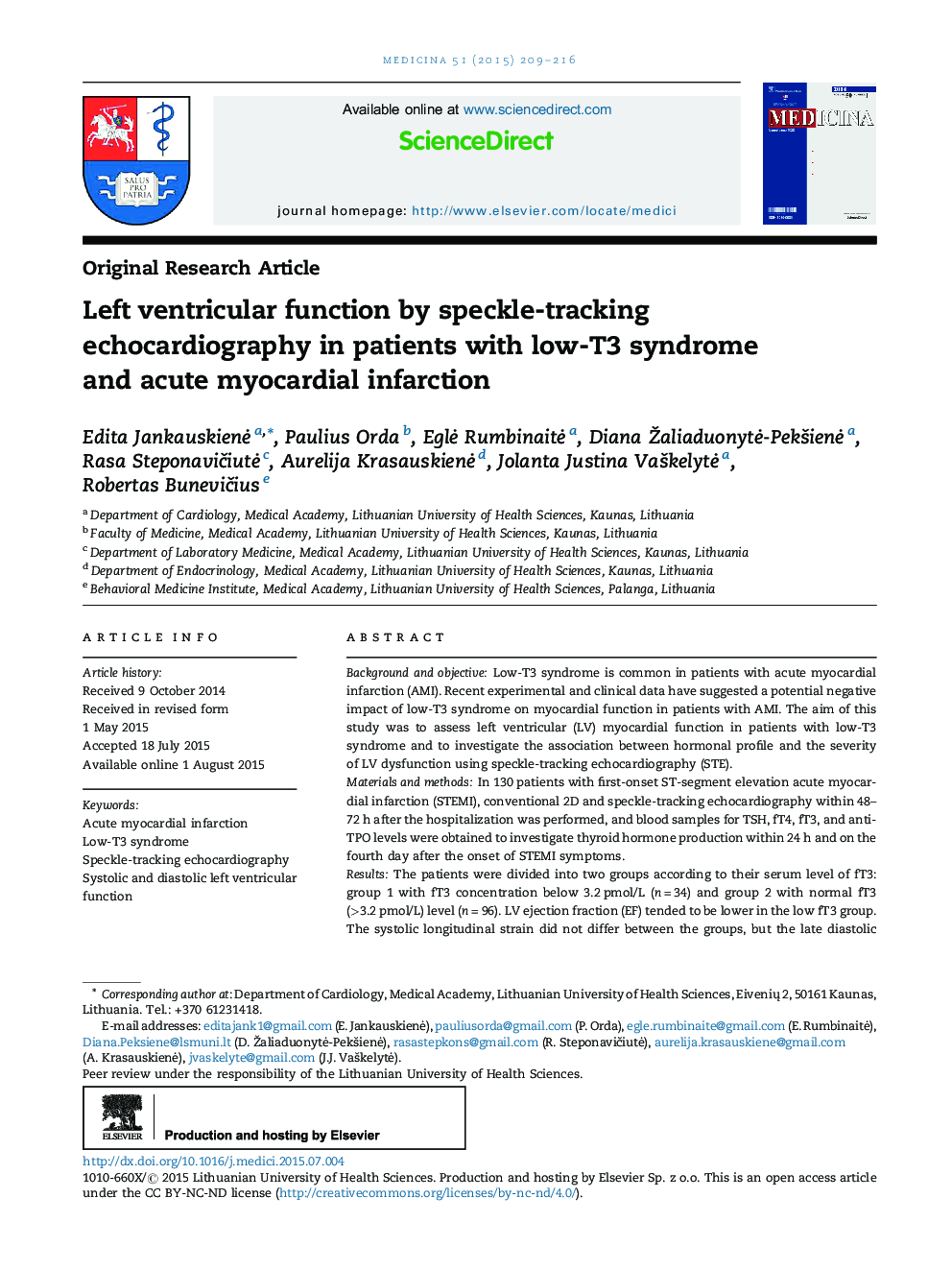| کد مقاله | کد نشریه | سال انتشار | مقاله انگلیسی | نسخه تمام متن |
|---|---|---|---|---|
| 2680402 | 1142349 | 2015 | 8 صفحه PDF | دانلود رایگان |

Background and objectiveLow-T3 syndrome is common in patients with acute myocardial infarction (AMI). Recent experimental and clinical data have suggested a potential negative impact of low-T3 syndrome on myocardial function in patients with AMI. The aim of this study was to assess left ventricular (LV) myocardial function in patients with low-T3 syndrome and to investigate the association between hormonal profile and the severity of LV dysfunction using speckle-tracking echocardiography (STE).Materials and methodsIn 130 patients with first-onset ST-segment elevation acute myocardial infarction (STEMI), conventional 2D and speckle-tracking echocardiography within 48–72 h after the hospitalization was performed, and blood samples for TSH, fT4, fT3, and anti-TPO levels were obtained to investigate thyroid hormone production within 24 h and on the fourth day after the onset of STEMI symptoms.ResultsThe patients were divided into two groups according to their serum level of fT3: group 1 with fT3 concentration below 3.2 pmol/L (n = 34) and group 2 with normal fT3 (>3.2 pmol/L) level (n = 96). LV ejection fraction (EF) tended to be lower in the low fT3 group. The systolic longitudinal strain did not differ between the groups, but the late diastolic longitudinal strain rate was lower in group 1 (P = 0.011). The systolic basal LV rotation positively correlated with the level of fT3 (r = 0.4; P < 0.001), while a negative correlation was detected between myocardial rotational parameters – systolic apical rotation (r = −0.2; P < 0.05), torsion (r = −0.3; P < 0.001), and diastolic apical rotation rate (r = −0.3; P < 0.01) – and fT3 levels.ConclusionsThe late diastolic longitudinal LV strain rate and LV rotation evaluated by speckle-tracking echocardiography were impaired in patients with low-T3 syndrome after AMI.
Journal: Medicina - Volume 51, Issue 4, 2015, Pages 209–216